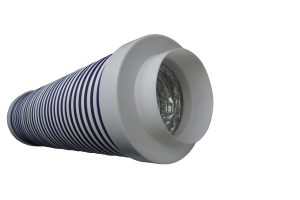Where is the ventilation muffler installed?
This kind of situation often occurs in the engineering practice of ventilation mufflers. The wind speed at the outlet of the ventilation system is very high, reaching more than 20~30m/s, which produces a lot of noise. Ventilation system outlet noise is mainly composed of the following two noise sources:
1) Mechanical noise of ventilation equipment.
2) High-speed airflow noise.
At this time, in order to effectively reduce the noise, in addition to considering the noise of the equipment, the reduction of the ventilation speed must also be fully considered.
At the same time, the wind speed also determines the effective length of the muffler.
Generally, the ventilation diameter reduces the wind speed of the airflow, for example, the wind speed of 30m/s is reduced to below 10m/s. At this time, in order to make the muffler more economical and practical, the length of the muffler is usually designed using the decelerated airflow velocity.
At this time, is the installation position of the muffler appropriate? First of all, the diameter cannot be installed after the reducer, directly installed after the reducer, the following situations will occur
If the muffler is directly installed after reducing the diameter, the vortex of the airflow will increase, and the resistance of the ventilation system will increase.
The airflow in the central area of the muffler inlet is not enough to completely attenuate. When it directly rushes into the muffler, the actual airflow velocity in the muffler is far greater than the design airflow velocity of the muffler. The actual effective length of the muffler is reduced, and the actual effect of the muffler cannot meet the design requirements.
The correct method is to extend the pipe with reduced diameter by 5 to 8 times the diameter, and then install the muffler when the airflow is stable. The muffler can achieve the design effect.
Post time: Nov-21-2022
